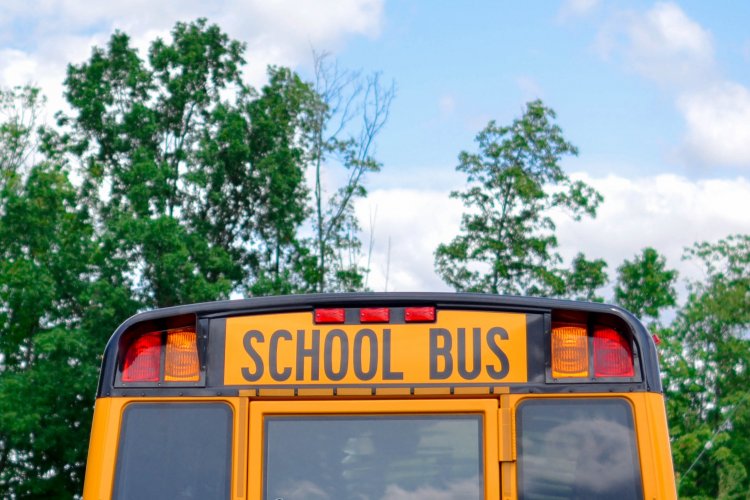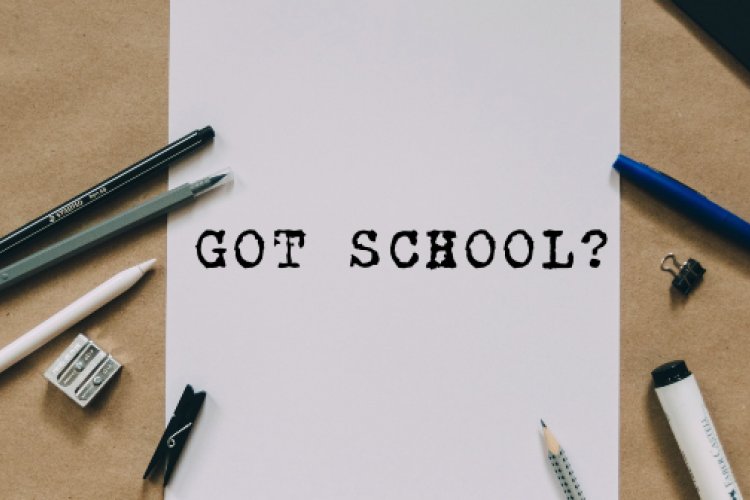Beijing Education Commission Releases Comprehensive FAQ on Restarting School
Following the announcement that Beijing schools will partially reopen on Apr 27, the Beijing Education Commission has moved quickly to answer a number of logistical and health-related questions regarding the resumption of classes, reproduced in full here with translation from our sister site beijingkids. Click here to see the original post in Chinese.
1. How will student break times be managed?
Schools should operate under “closed class management” principles, with classes starting at staggered times so that breaks, meals, and entering/leaving the campus to occur at different times, with the aim of minimizing cross-class interaction.
2. What should students and school staff pay attention to when entering and leaving the school?
Teachers, students, and staff should avoid all unnecessary interactions and travel in their time away from campus. Students arriving early should be allowed to enter the school immediately rather than waiting outside. Schools should guide all members of the community to take extra precautions at drop-off and pick-up.
3. How should schools manage the taking of temperatures at the school entrance?
All those who plan to enter school grounds must have their temperature taken before entering. No one with a fever will be allowed to enter the school. Schools must establish 1-meter distance marks to avoid overcrowding.
4. Will guests outside of school staff and students be allowed on campus?
No one without a direct connection to the school will be allowed on campus. If for any exceptional reason someone aside from staff, teachers, and students need to enter campus, strict registration protocol and epidemic control must be followed.
5. What about parents delivering and picking up their children?
Schools must arrange to assure smooth flow and separation of parents by marking waiting areas and staggering school hours to prevent crowds from forming at drop-off and pick-up times. Parents should take protective measures and not loiter near school grounds.
6. How can parents help schools with epidemic control?
Be vigilant in protecting oneself and minimizing all unnecessary outings. Encourage children to practice good personal hygiene habits. If and when students have any symptoms such as fever, immediately seek medical attention and alert the school. If parents or other family members exhibit symptoms, students should not come to school and should observe a 14-day home quarantine.
7. What happens if someone is detected as having a fever when attempting to enter campus?
Dedicated personnel should immediately take the person to an observation area specifically designed for this purpose to await transport to a fever clinic. Parents should be immediately notified if a student has a fever.
8. Do school staff and students need to have their body temperature checked every day?
Schools must establish a system of daily morning and afternoon inspections to take body temperatures for students, teachers, and all other staff.
9. How does the school monitor the health status of the staff and students?
The school will establish vacation tracking and health accounts of teachers, staff, and students, and have a list of their health status over the past 14 days. Morning and afternoon health checks will be maintained daily and relevant information will be accessed shared with the CDC. Schools will also work towards actively preventing and treating other infectious diseases common in spring while continuously monitoring COVID-19.
10. How should the school handle absences?
The school shall strengthen the management of absentee staff in accordance with relevant regulations, keep records of absentees. Teachers and students who are absent due to illness should report their situation promptly
11. After reopening schools, how to make the first lesson better?
The school should organize students, teachers, and parents to have a good “first lesson”. Students should have patriotic education class, ideological and political theory class and public health knowledge class for students. Teachers should be trained in epidemic prevention and control, and emergency psychological counseling during the school year. Parents should have guidance on the publicity of regulations and family education, at the same time cooperate with schools to do a good job in the work of opening school.
12. How much space should be maintained between students in the classrooms once school starts?
The school will follow the guidelines set in accordance with the epidemic prevention rules. This means that each student should be separated by at least 1 meter. Students will also be divided into smaller classes, and study via on-site and online classes as necessary.
13. How can you maintain a safe distance apart in physical education (PE) class?
PE classes will avoid all sports and activities that will require any need for contact. Instead, we will make full use of the sports field, and also increases the number of activities or sports that can be done on a more individual or personal basis that does not require much physical interaction from peers.
14. How will the school dormitory be managed for this situation?
Students who live nearby or within the district will not be required to live in the dormitories. If it is absolutely necessary to arrange accommodation for those living far away from school, the dorms provided should provide at least 4sqm of space per student, and each dorm room cannot have more than 6 students. Boarding students are also not allowed to leave the campus during school.
15. How will necessary group activities and meetings be carried out once school starts again?
The school will organize various activities and hold meetings through video conferences. If on-site meetings are necessary, they will have a reduced number of participants, shortened meeting time, increased space between seats, and ventilation of the venue shall be ensured. No large gatherings of people will be allowed.
16. How will teaching and research guidance, and continuing education be carried out?
Teaching and research guidance, continuing education, and training should comply with the requirements of epidemic prevention and control, reduce crowd gathering, and try to adopt online methods or other effective methods.
17. Do faculty members and students need to wear masks at school?
Faculty, staff, and students are required to wear masks on campus, and teachers need to wear masks when teaching.
18. What are the specific measures that will be taken for hand hygiene of teaching staff and students during school?
Hand hygiene measures for teaching staff and students must be strictly implemented. Hands need to be washed before eating, when using the toilet, after touching garbage, upon returning home, after using public goods such as sports equipment and school computers, after touching animals, before touching susceptible body parts such as eyes, and after touching contaminated items. Hands must be washed with soap. Hands must be washed thoroughly under running water using the correct hand washing method. Hands-free disinfectant may also be used to disinfect hands.
19. How should the school arrange lunch?
The school must arrange the dining hall to extend the dining time. Teachers and students should keep a certain distance from others when queuing, and wear masks when queuing; they should follow the principles of time-sharing, peak shifting, and one-way dining. Meals must be distributed using disposable lunch boxes and cleaning and disinfection of non-disposable catering utensils must be strengthened.
20. After school starts, how should school offices be cleaned and disinfected?
Chlorine-containing disinfectants must be used to spray or wipe disinfectant in areas including desks, floors, aisles, door handles, elevators, etc. before office work, and ensure that doors and windows are opened for 30 minutes after disinfection. Office landline telephones must be wiped and disinfected twice a day with 75 percent alcohol solution. The office area must be equipped with handwashing facilities and disinfection supplies. Special dustbins covered with plastic bags should be placed in public areas. The used paper towels, masks, etc. are placed in a special trash can, and they are cleaned daily by a designated person. Before cleaning, spray the trash with disinfectant until it is completely wet, and then seal it.
21. After school starts, what is the procedure in cleaning and disinfecting classrooms and laboratories?
Classrooms, self-study rooms, laboratories, and other common teaching areas are to be disinfected twice a day. Windows need to be frequently opened to allow ventilation, with each ventilation time being no less than 30 minutes and no less than 3 times a day. If conditions permit, assuming there is good insulation, windows must be constantly opened to maintain fresh air circulation. In addition to routine disinfection, the laboratories need to increase daily spray disinfection inside and outside the facility.
22. After school starts, how will air circulation in various places of the school be ensured?
Ventilation in all learning, working, and living places in the school should be improved. Each ventilation time should be no less than 30 minutes and no less than three times a day. Except for special weather conditions, classrooms, and offices should maintain open windows for ventilation.
23. Can air conditioning and ventilation systems be used in various places of the school after school starts?
In principle, the centralized air conditioning and ventilation system should not be used. If absolutely necessary, the air conditioning system should comply with the epidemic prevention and control regulations. The indoor air supply and return air vents should be scrubbed and disinfected daily. Special facilities should be provided at the air vents to prevent the entry of rats and insects. Open cooling towers should be equipped with barrier facilities or away from public passages for regular disinfection. Daily maintenance and cleaning and disinfection records must be made for future reference.
24. How can schools strengthen the management of cafeteria hygiene?
The school should keep the canteen environment clean and tidy, and regularly disinfect and maintain a record thereof of surfaces such as tables, door handles, and faucets. Tableware (including drinking cups and glasses) must be sterilized at high temperature in accordance with regulation. It is recommended to use self-prepared tableware (including drinking cups and glasses) after cleaning and disinfection, or use high-temperature sterilized tableware (including drinking cups and glasses) in the canteen. After disinfection, the residual disinfectant should be washed away. The purchase of food supplies must strictly follow the requirements for obtaining proper certificates, and using poultry and livestock from unknown sources is strictly prohibited. Procurement of edible wild animals is strictly prohibited. Health check-ups for canteen employees must be conducted in advance and safety operation training must be carried out. Only after passing the check-ups and training can canteen employees start working; each employee must wear a mask and head covering throughout the work period.
25. How should the garbage generated on campus be removed?
The school should strengthen the classification management of garbage, collect and sort out all garbage in a timely manner, and maintain a good job in cleaning and disinfection of garbage containers.
26. What kind of training and drill practices on epidemic preventions and controls must schools take?
Schools must give epidemic prevention training to their staff, students, and parents to educate them on epidemic prevention, personal protection, and disinfection. All districts and schools implement an emergency plan for epidemic prevention and control, drill practices on emergencies such as body temperature inspection, handling those with fever, safety and security issues, make sure all key workers know how to handle emergencies according to the procedure.
27. How to ensure schools are ready for epidemic prevention and control?
The education bureau will work with other government ministries to plan for health workers and school doctor arrangement. Schools can make use of their school clinic and doctor, hire back retired health personnel to get fully prepared for epidemic prevention and control.
28. How to provide proper psychological counseling to teachers and students?
Schools should provide counseling to alleviate the psychological pressure of the COVID-19 situation. Schools should pay particular attention to the changes in the psychological status of teachers, students, and staff who are suspected of illness, are unable to start school on time, or have had close contact history and are in quarantine. If and when necessary, students, staff, and teachers suffering from severe psychological stress should be referred for external medical treatment.
29. How to handle a situation if a student or teacher has symptoms such as fever, cough, sore throat, fatigue, and/or diarrhea?
Schools must take quarantine measures immediately when they find suspect symptoms such as fever, cough, sore throat, fatigue, and/or diarrhea. Schools need to inform parents immediately if a student shows the above-mentioned symptoms and send the suspect to the closest fever clinic, make sure the suspects are found in time, handled quickly, controlled accurately, and treated effectively. If students and teachers or their close contact have the above-mentioned symptoms, they need to report to their school on time and start home quarantine.
30. Will schools be suspended if a suspected or confirmed case is found?
Schools shall implement emergency plans immediately if a suspected or confirmed case is discovered, and according to epidemic control protocols, take measures such as suspending a class or classes, or even the whole school as necessary to ensure students, teachers, and staff are safe and healthy.
This article originally appeared on our sister site beijingkids.
Photo: Agence Olloweb (via Unsplash)







